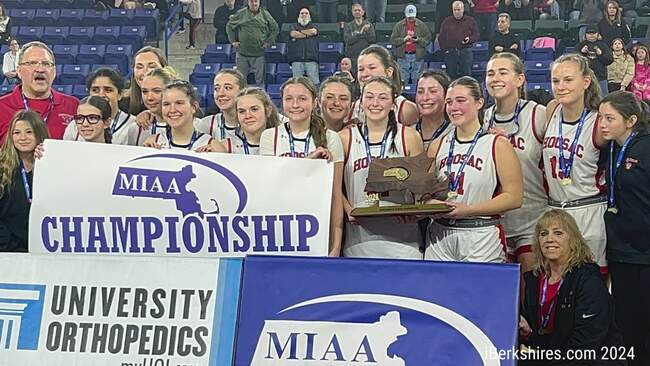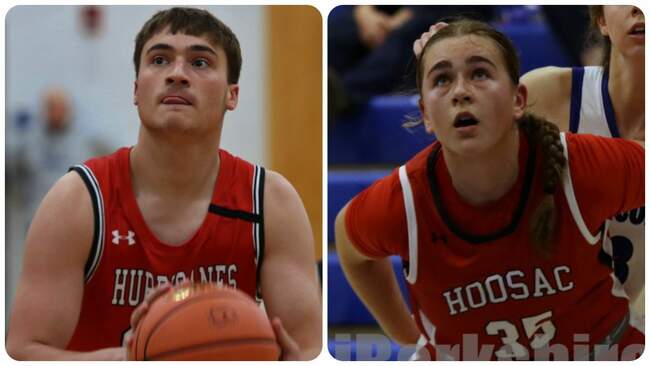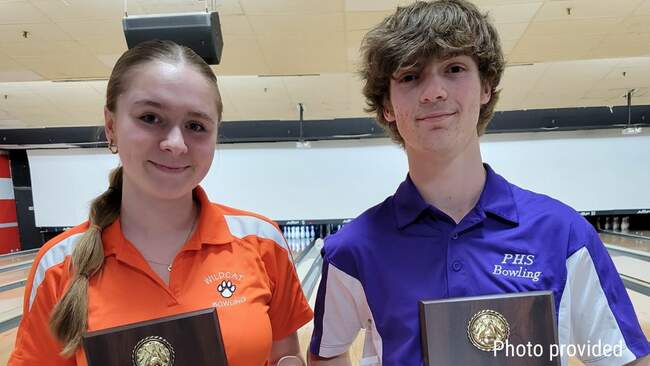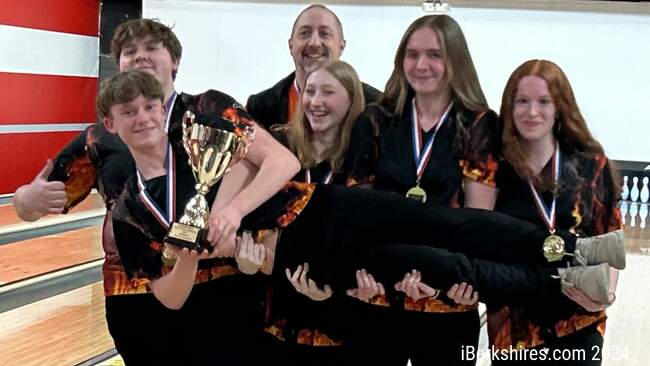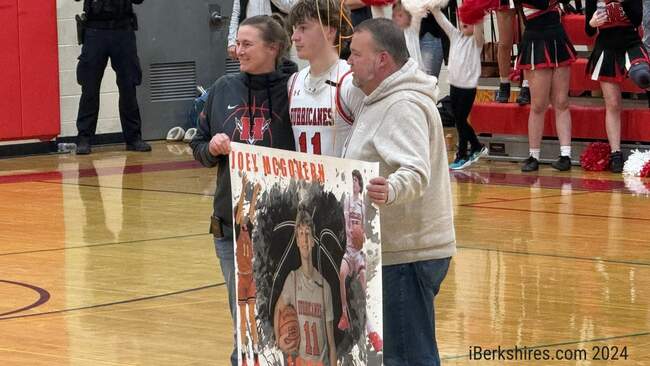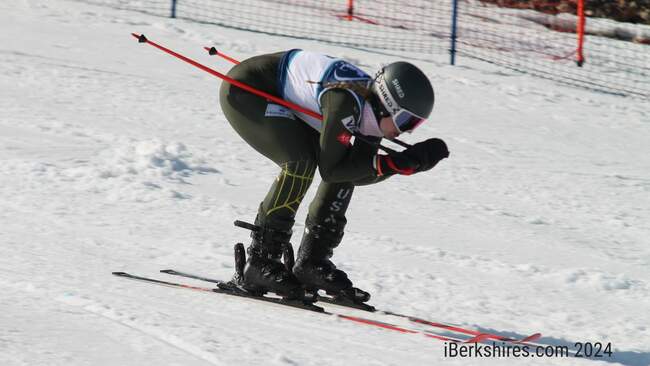Clarksburg Exhibit Explored Roots of Bigotry
 |
She would spend more than three years in hiding, watching friends and family dragged away, seeing their suffering and hearing of their deaths — uncles, aunts, cousins. As she related each death, she would repeat, "It was no surprise. We already knew it."
Friedman's audience on Thursday night was little older than she was in back in 1941, when the the Nazis marched into her hometown of Vilna. It was the second invasion of what had been called the "Jerusalem of Lithuania"; the Soviets had marched in two years before.
Her father was taken away, her brother disappeared; a cousin's fainting spell allowed her mother to toss her over a wall as her neighborhood was being rounded up. But first, her mother ripped the insignia classifying her as a Jew and exhorted her never to forget that she was Jewish.
Christian friends of her father would risk their own lives to keep her hidden. She would be reunited with her mother and her brother; close relatives in the United States would bring them to Connecticut. Years later, the Soviet Union would allow her father to join them.
"About 250 of us survived from about 150,000 Jews who lived in my city," said the diminutive retired teacher. "Only two complete families survived. The fact that my father, my mother, and my brother and I survived can only be considered a miracle."
Friedman described herself as "a dinosaur," one of the few survivors of Vilna still able to tell the tale. She began telling her story after meeting a professor who purportedly knew all about the Holocaust — but who couldn't comprehend how the Jews had suffered.
.JPG) Esia Friedman Esia Friedman |
.JPG) |
.JPG) |
.JPG) |
.JPG) |
.JPG) |
The Holocaust generation is disappearing. But events like that at Clarksburg School on Thursday are ensuring that their stories are not forgotten nor consigned just to museums or archives.
Called "Smoke and Ashes," the exhibit by the Grade 8 class, charted the rise of Nazism and life in the ghettoes. It looked at the roots of prejudice and bigotry and celebrated those "righteous" Christians and others who risked their lives to save Jews during the Holocaust.
The research, which included a field trip to the U.S. Holocaust Museum in Washington, is designed not only to inform the students but to allow them insight into the experiences of real people — and to share those experiences with others.
Eighth-graders at the school are the only ones in Berkshire County — if not the state — to have Holocaust studies integrated into their curriculum.
"We must make our children understand that their choices have profound consequences on the world," said Michael Little, the English teacher who began the course.
Little is working with Rabbi Robert Sternberg, director of Hatikvah Holocaust Education Center in Springfield, and others to create a Holocaust curriculum for middle and high schools across the state. The state Department of Education is supportive of the effort.
While Little teaches the course, he relies on the expertise of Sternberg, director of the only Holocaust museum in the area, and well-known World War II authority Darrell K. English, whose vast collection of artifacts supplies exhibit pieces for both Clarksburg and Hatikvah.
The children's trip to Washington was funded by Robert and Elaine Baum of Stockbridge. The couple have supported a number of educational field trips to the U.S. Holocaust Museum and this was the first year they had helped the Clarksburg class.
It was also the first time in eight years they had been to an exhibit like this, said Elaine Baum. "The students have down an awesome job. ... Great applause for all of them."
English's artifacts, including some posters taken from the current "The Art of World War II" on display at the Brill Gallery in the Eclipse Mill in North Adams, gave heft to the wide-ranging exhibits.
Adam Chenail and Brett Denning, for example, created a tabletop ghetto, burned out and overcrowded; Nicole Bona and James Rancourt charted the rise of Nazism and the laws promulgated to separate Jews from other Germans.
Among the speakers were Sternberg and local veterans Michael Chalifoux and Bernie Roberts.
The shadows of the Holocaust touch current events as well, as Carol Kane, the school nurse, tried to explain an exhibit on Darfur to a young girl.
"I think it's kind of getting lost," said Brian Cunningham of North Adams of the exhibit's information. The Eclipse Mill resident and his wife decided to come to the event after seeing the Brill Gallery exhibit. "People who actually were part of this have gone. I think it needs to be done to keep it in people's minds what a terrible event it really was."
It reminded Joan Lesure of Clarksburg of her childhood. "I was these kids' age when this was happening. ... You wonder how people can do things like that."
The Holocaust destroyed the lives of 7 million innocent Jews. The architects of the Holocaust and their minions also bear guilt for the 50 million Jewish descendents who would be alive today, said Friedman. "We mourn those we lost and those we never knew."
Friedman met her husband and raised her family in Connecticut, retiring after many years as a teacher in the Meriden School System. She's grateful for her life and for the United States giving her a home. Now she's trying to pay it back by volunteering her language skills with the local Polish community and seniors.
It was her first time at Clarksburg and it left a strong impression.
"I have never seen a display like what they did in this school," she said, vowing to "bring a busload" of friends with her if she returned next year.
Stations:
"Roots of AntiSemitism": Allie Bona
"Nazi Germany": Nicole Bona and James Rancourt
"The Ghettos": Adams Chenail and Brett Denning
"The Einsatzgruppen": Nolan Woods and Riley Nolan
"Other Victims": Amanda Larabee
"Deportations": Wesley Winch
"Concentration Camps": Brodey Moran, Chris Rancourt and Justin Meczywor
"6,000,000 Memories": Housatonic Academy
"Resistance": Lyndsey Degrenier, Ben Pecor and Jesse Foehl
"Near the End": Mitchell Meranti
"The United States and Great Britain": Zach Giron and Zach Tatro
"The Righteous": Chelsea O'Neill, Kolby Lampiasi and Brandon Wylde
"Other Holocausts": Alex Cleary and Elena Sullivan
"The Finish": Audrey Macomber and Ashleigh Wimpenney
"Justice": Alex McKinney; gallows built by Devin Bedard and Zac Serrano
"The Time Is Now": Genna Twomey
"Darfur: A Call to Consciousness"
"Traits That Transcend": stairwell display of rescuers

.jpg)
